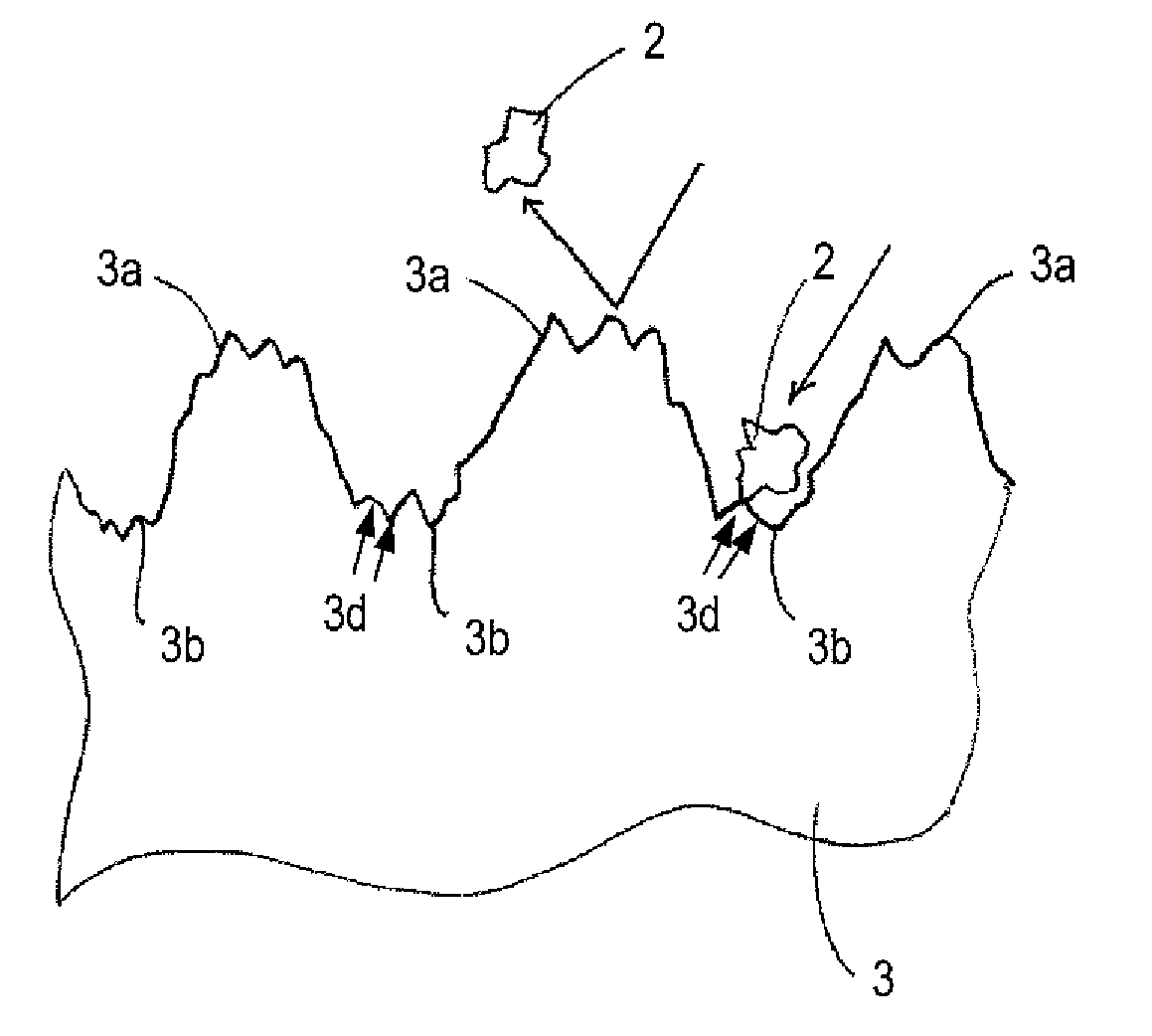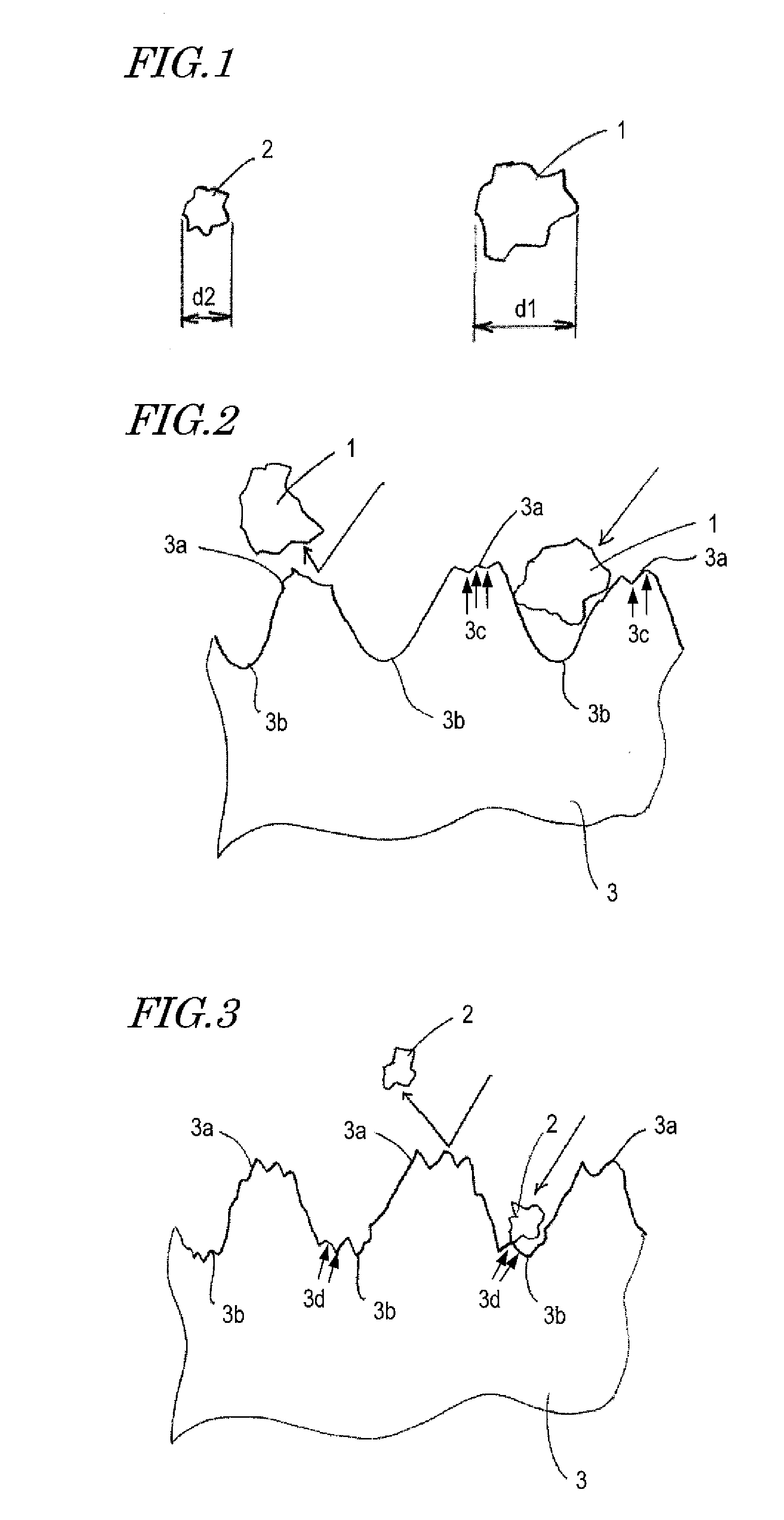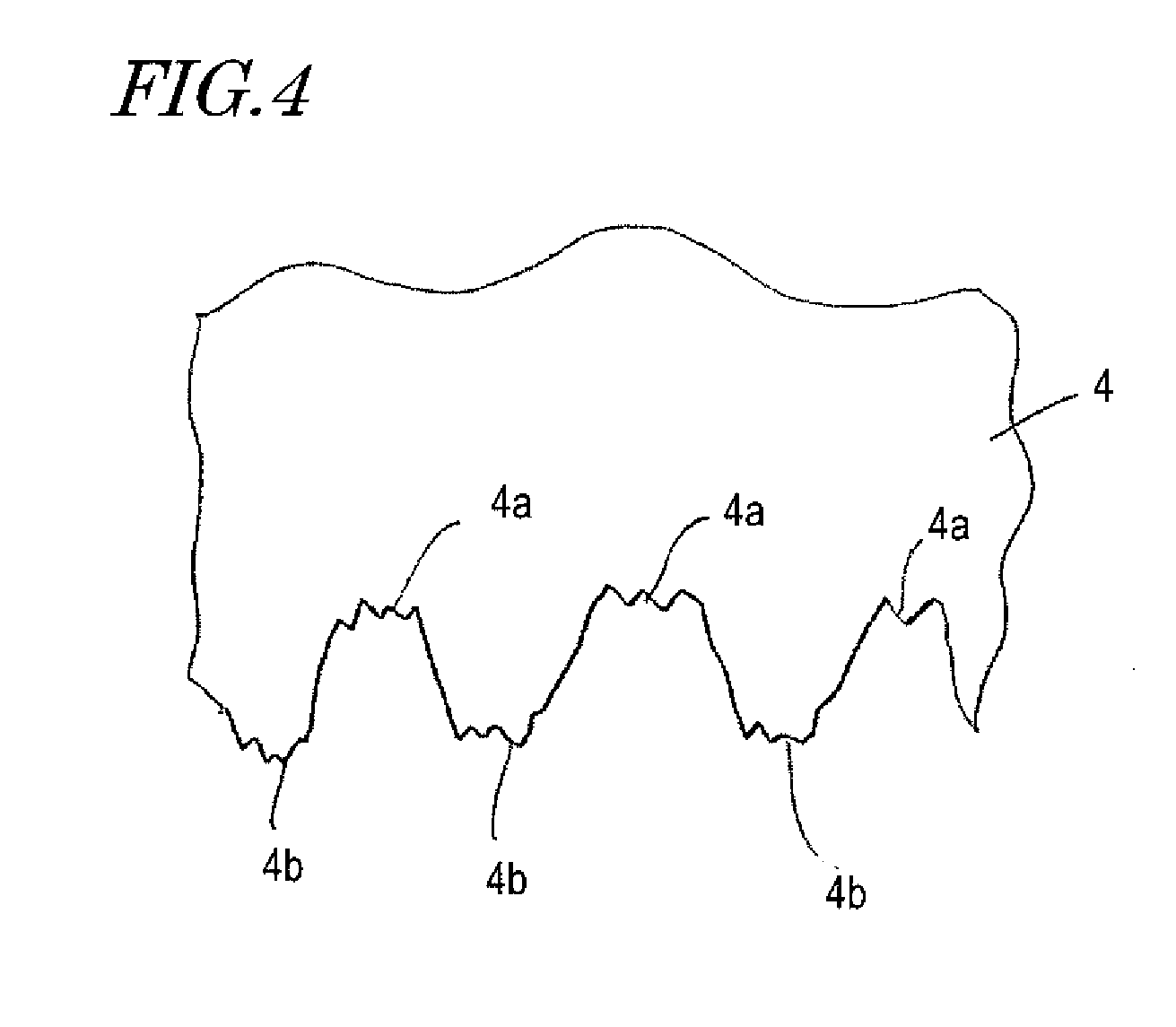Method of making antireflective roughened surface and lens barrel with roughened surface made by the method
a technology of anti-reflective roughening and lens barrel, which is applied in the direction of instruments, coatings, optical elements, etc., can solve the problems of interference with the realization of inexpensive products
- Summary
- Abstract
- Description
- Claims
- Application Information
AI Technical Summary
Benefits of technology
Problems solved by technology
Method used
Image
Examples
embodiment 1
[0043]A First Specific Preferred Embodiment of the present invention to be described below is a method of making a roughened surface by performing different modes of blasting on the same die a number of times compliant with a predetermined standard. As used herein, the “different modes of blasting” means that the blasting is carried out in multiple steps using abrasive grains of different sizes.
[0044]For example, when the blasting is carried out for the first time, a first roughness may be produced using abrasive grains of the biggest size. Next, when the blasting is carried out for the second time, a second roughness may be produced on the first roughness using abrasive grains that are smaller in size than the ones used for the first time around. And if the blasting is further carried out for the third time and on, a third roughness will be produced thereon using even smaller abrasive grains than the ones used last time.
[0045]On the surface of the die thus obtained, the second roug...
embodiment 2
[0062]The molded product 4 obtained in the first preferred embodiment (see FIG. 4) may be used as a part to be put into the lens barrel of an image capture device.
[0063]FIG. 5 is a cross-sectional view illustrating a retractable lens barrel 50 as a second specific preferred embodiment of the present invention. The lens barrel 50 includes multiple lenses L1 to L7, multiple lens holders 51 to 53, an imager 54 and a shielding member 55.
[0064]Inside those lens holders 51 to 53, arranged are resin molded parts 60 to 62 corresponding to the molded product 4 obtained by the method of the first preferred embodiment. On the inner surface of these resin molded parts 60 to 62, there are valleys 4a and mountains 4b as shown in FIG. 4. Thus, it is possible to prevent unnecessary portions of the externally incoming light that have also entered this lens barrel 50 through the lenses L1 and L2 but will not be guided to the imager 54 from being reflected internally by the lens barrel 50. It should b...
PUM
| Property | Measurement | Unit |
|---|---|---|
| size | aaaaa | aaaaa |
| size | aaaaa | aaaaa |
| size | aaaaa | aaaaa |
Abstract
Description
Claims
Application Information
 Login to View More
Login to View More - R&D
- Intellectual Property
- Life Sciences
- Materials
- Tech Scout
- Unparalleled Data Quality
- Higher Quality Content
- 60% Fewer Hallucinations
Browse by: Latest US Patents, China's latest patents, Technical Efficacy Thesaurus, Application Domain, Technology Topic, Popular Technical Reports.
© 2025 PatSnap. All rights reserved.Legal|Privacy policy|Modern Slavery Act Transparency Statement|Sitemap|About US| Contact US: help@patsnap.com



